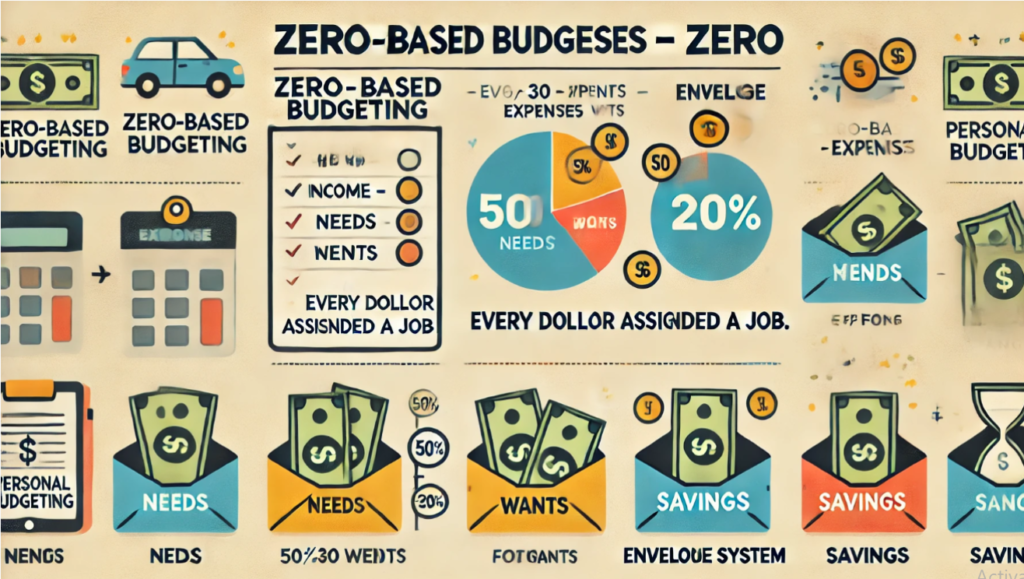
Financial freedom is the ability to live a life without financial constraints or limitations. It means having enough wealth and resources to live the life you desire, without being tied down by debt, bills, or financial stress. Beginner-friendly budgeting tips can provide a sense of security, peace of mind, and the ability to pursue your passions and goals without being held back by money worries. Budgeting is a crucial component in achieving financial freedom. It serves as the foundation for managing your finances, enabling you to track your income and expenses, prioritize your spending, and save for the future. By creating and sticking to a budget, you can gain control over your money, reduce unnecessary spending, and work towards achieving your financial goals.
Understanding the Basics of Budgeting

Budgeting is the process of creating a plan for how you will manage your money. It plays a crucial role in managing personal finances by helping individuals allocate their income towards various expenses, savings, and debt payments. The key components of a budget include income, which is the money you earn from various sources, expenses, which are the costs of living and other purchases, savings, which is the money you set aside for future use or emergencies, and debt, which is any money you owe to creditors. There are several common types of budgets that individuals can use to manage their finances. The 50/30/20 rule suggests allocating 50% of income to needs, 30% to wants, and 20% to savings and debt payments.
Assessing Your Current Financial Situation

First, gather all of your financial documents such as pay stubs, bank statements, and bills. Next, calculate your total monthly income after taxes. This includes any regular paychecks, as well as additional sources of income such as rental property or freelance work. Then, list out all of your monthly expenses, such as rent or mortgage, utilities, groceries, transportation, and any other regular bills. Be sure to include any irregular expenses as well, such as car maintenance or medical bills. Once you have a clear picture of your income and expenses, calculate your total debt. This includes any outstanding balances on credit cards, student loans, car loans, and any other debts you may have.
It is crucial to know where your money is going before creating a budget. Understanding your spending habits and expenses will help you make informed decisions about how to allocate your income. By tracking your expenses, you can identify areas where you can potentially cut back and save money, ultimately helping you to create a realistic and effective budget. This will ensure that you are able to prioritize your spending and work towards your financial goals.
Calculating net income is a key part of managing personal finances. To calculate net income, start by adding up all sources of income, such as your salary, wages, bonuses, and any other earnings. Then, subtract all necessary expenses, such as rent or mortgage payments, utilities, groceries, and other essential costs. The resulting figure is your net income. When categorizing expenses into needs versus wants, it’s important to prioritize essential expenses first. Needs include things like housing, food, transportation, and healthcare. Wants are non-essential items, such as entertainment, dining out, and luxury purchases. By categorizing expenses in this way, you can better understand where your money is going and make informed decisions about your spending.
There are several tools available for tracking expenses, catering to different preferences and needs. If you prefer digital solutions, there are various apps such as Mint, YNAB (You Need A Budget), and Expensify that can help you monitor and categorize your spending. These apps often provide features for linking bank accounts, setting budgets, and generating reports. For those who prefer a more traditional approach, spreadsheets can be an effective tool for tracking expenses. Microsoft Excel and Google Sheets offer templates specifically designed for budgeting and expense tracking. This method allows for customization and detailed analysis of your spending habits. If you prefer a more tactile approach, pen-and-paper methods can also be effective.
Creating Your Budget

Setting up a budget can be done using different methods. One common method is the 50/30/20 rule, which involves allocating 50% of your income for needs, 30% for wants, and 20% for savings or debt repayment. Another approach is zero-based budgeting, where every dollar is assigned a job to achieve a zero balance at the end of the month, ensuring that all income is accounted for. Additionally, the envelope system involves physically separating cash into envelopes for specific categories such as groceries, entertainment, and utilities, helping to control spending in each area. Each method offers a different approach to budgeting and it’s important to find the one that works best for your financial situation.
When it comes to adjusting budget categories according to personal circumstances, it’s important to first take a close look at your current financial situation. Start by evaluating your income, expenses, and any financial goals you may have. If you find that certain budget categories are consistently overspending, it may be time to reevaluate and make adjustments. You can start by identifying areas where you can cut back and reallocate funds to other areas that may need more attention. For example, if you find that you’re spending too much on dining out, you can consider reducing that category and allocating more funds to savings or paying off debt.

Building flexibility for emergencies or irregular expenses is an important aspect of financial planning. One way to do this is by creating an emergency fund. Set aside a portion of your income each month into a separate savings account specifically for unexpected expenses. Aim to save at least three to six months’ worth of living expenses in this fund. Another way to build flexibility is by making sure to regularly review and adjust your budget. Take into account any irregular expenses that may come up, such as car repairs, medical bills, or home maintenance. By including these in your budget, you can better prepare for them when they arise.
Tips for Sticking to Your Budget

Automating savings and bill payments can be a great way to stay on track with your budget. By setting up automatic transfers to your savings account and scheduling bill payments, you can ensure that these important financial tasks are taken care of without the temptation to spend the money elsewhere. Another helpful strategy is to use budgeting apps and tools to set reminders and track your spending. These tools can provide valuable insights into your financial habits and help you make more informed decisions about where to allocate your money. Consider setting up a “fun fund” for discretionary spending. This can help reduce feelings of restriction and give you some flexibility within your budget.
Overcoming Common Budgeting Challenges

Overcoming common budgeting challenges can be a daunting task, but with the right strategies, it is definitely achievable. One of the most common challenges is unexpected expenses, which can throw off even the most carefully planned budget. To combat this, it is important to build an emergency fund. Setting aside a portion of your income each month can provide a safety net for when these unexpected expenses arise. Another challenge many people face is fluctuating income. This can make it difficult to stick to a budget, as income levels may vary from month to month. One solution to this is to consider taking on a side hustle or freelance work to supplement your income during leaner months. Lifestyle inflation is another common budgeting challenge.
The Importance of Saving and Reducing Debt

Saving and reducing debt are crucial steps towards achieving financial freedom. By prioritizing saving, individuals can build up an emergency fund to cover unexpected expenses and create a secure retirement account for the future. Having these safety nets in place can provide peace of mind and financial stability in the long run. When it comes to reducing debt, there are several strategies that can be employed. The debt snowball method involves paying off the smallest debts first, which can provide a sense of accomplishment and motivation to continue tackling larger debts. On the other hand, the debt avalanche method focuses on paying off debts with the highest interest rates first, ultimately saving money on interest payments in the long term. It’s important to start small with saving and gradually increase contributions as income grows.
Budgeting is an essential tool for achieving financial freedom. By carefully tracking your income and expenses, you can gain a clear understanding of your financial situation and make informed decisions about how to allocate your resources. Budgeting helps you identify areas where you may be overspending and find opportunities to save or invest for the future. It’s important to recognize that budgeting is not a quick fix, but rather a long-term strategy for building better financial habits. Starting small and being patient with yourself is key. It’s okay to make mistakes along the way, as long as you learn from them and stay committed to your financial goals. Consistency is also crucial when it comes to budgeting.














